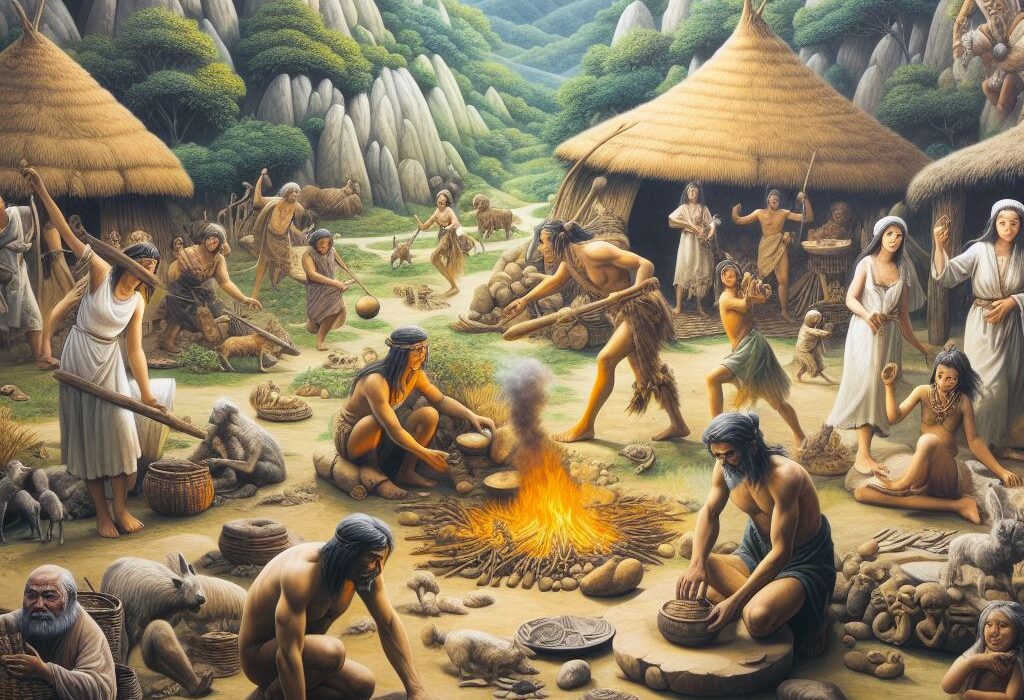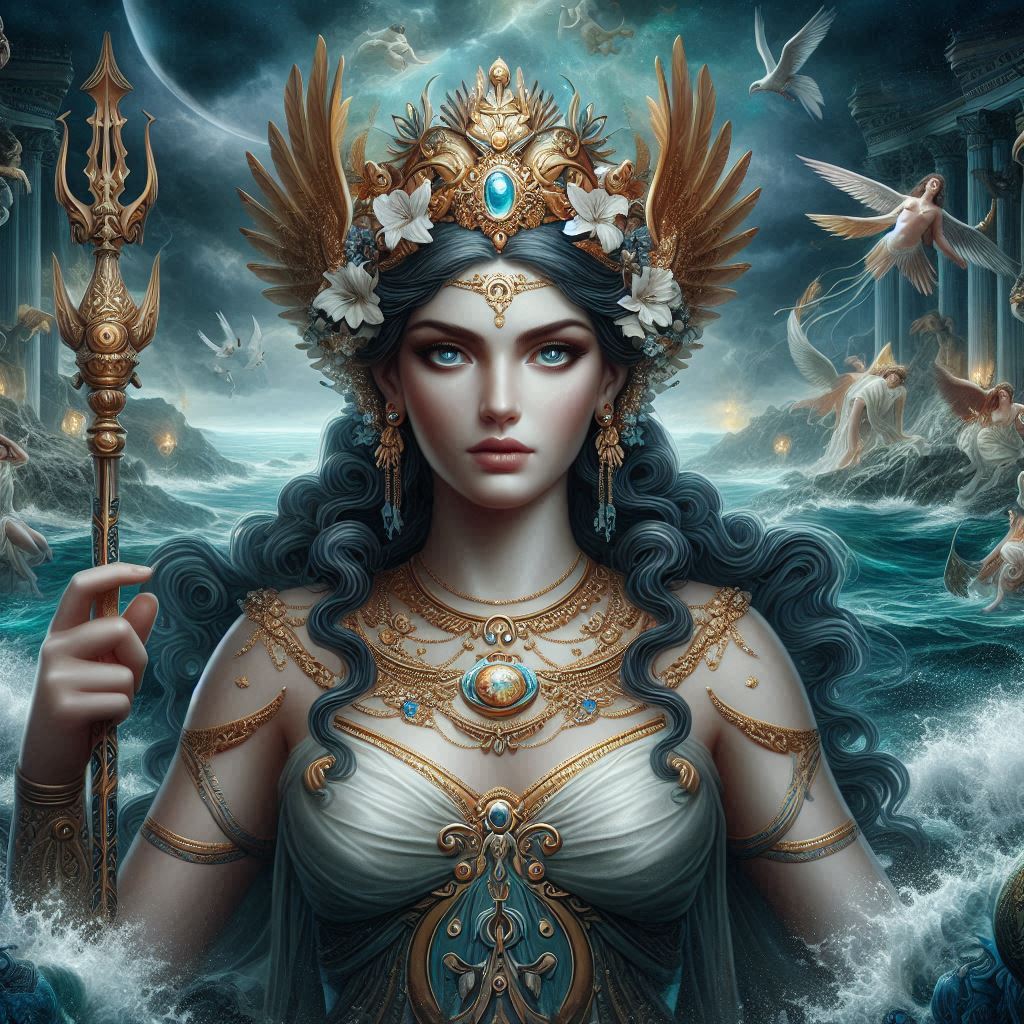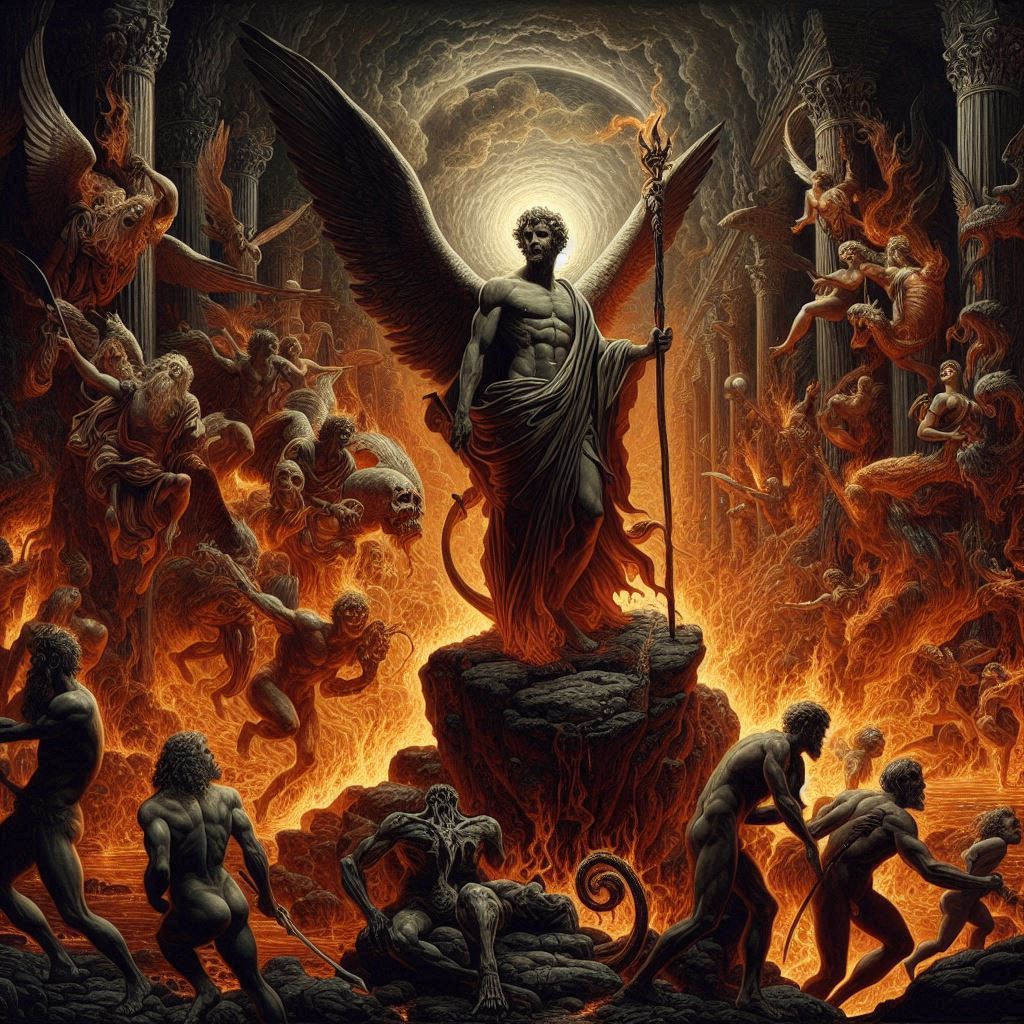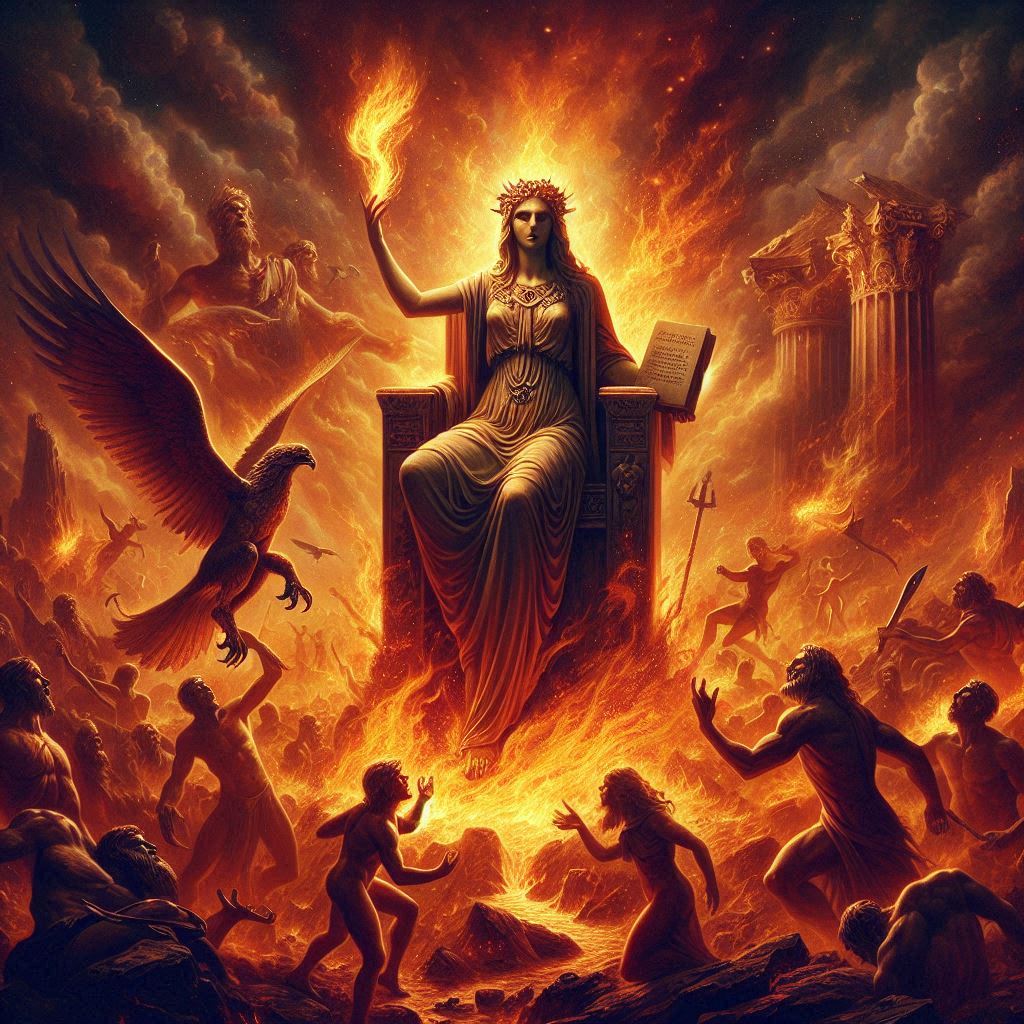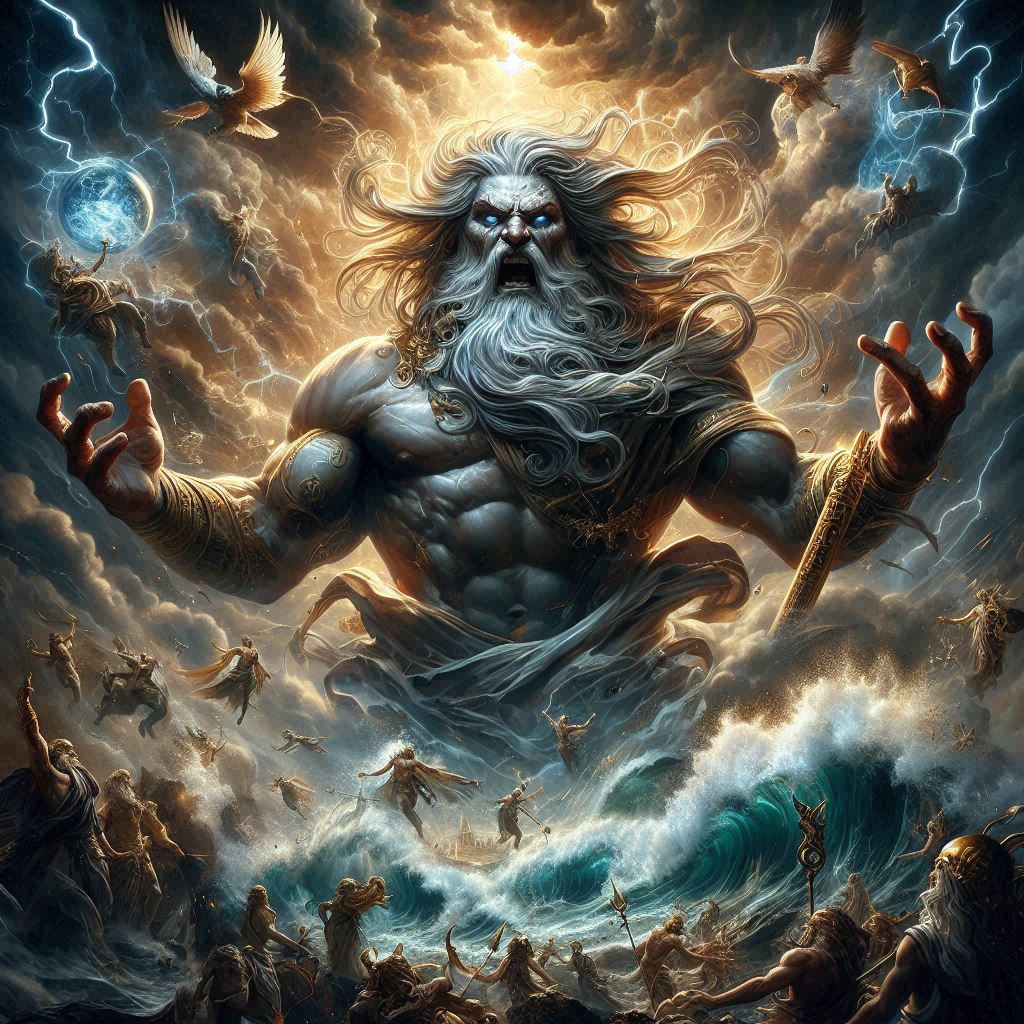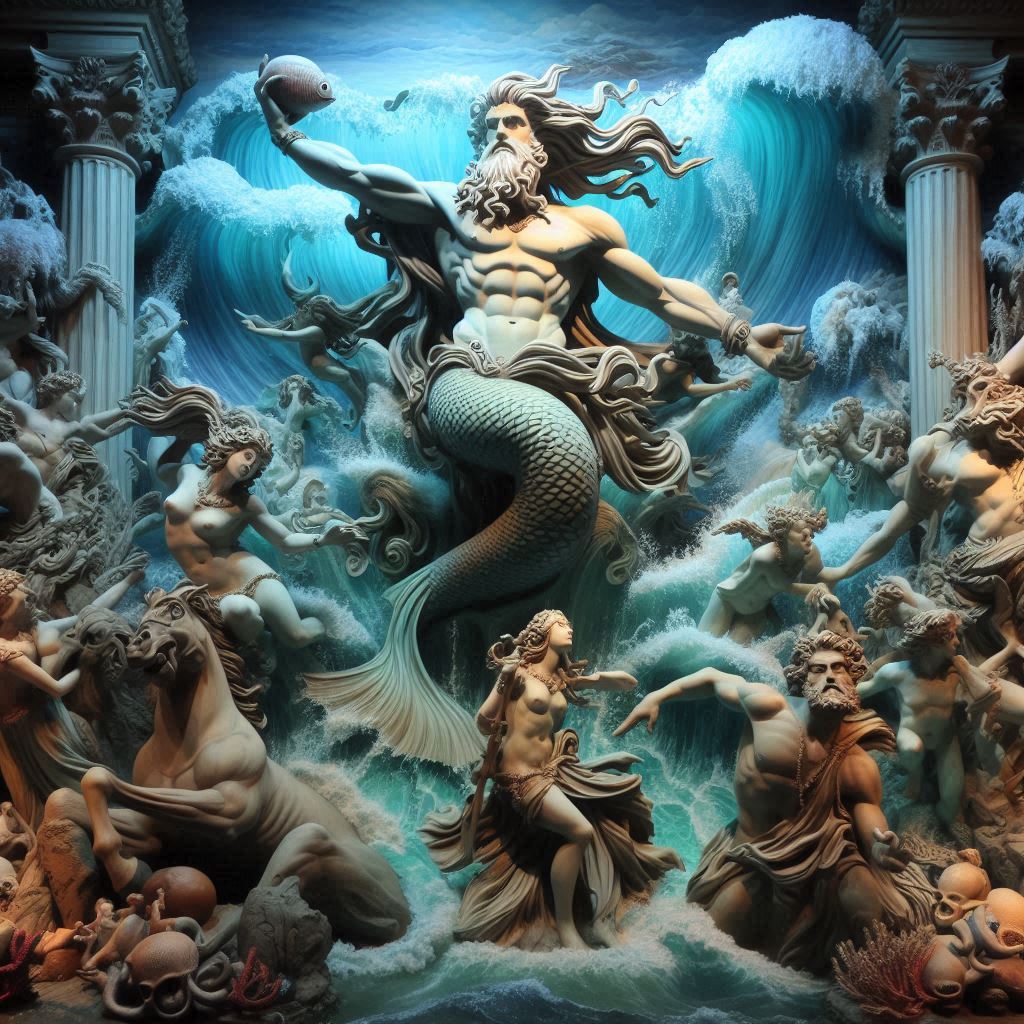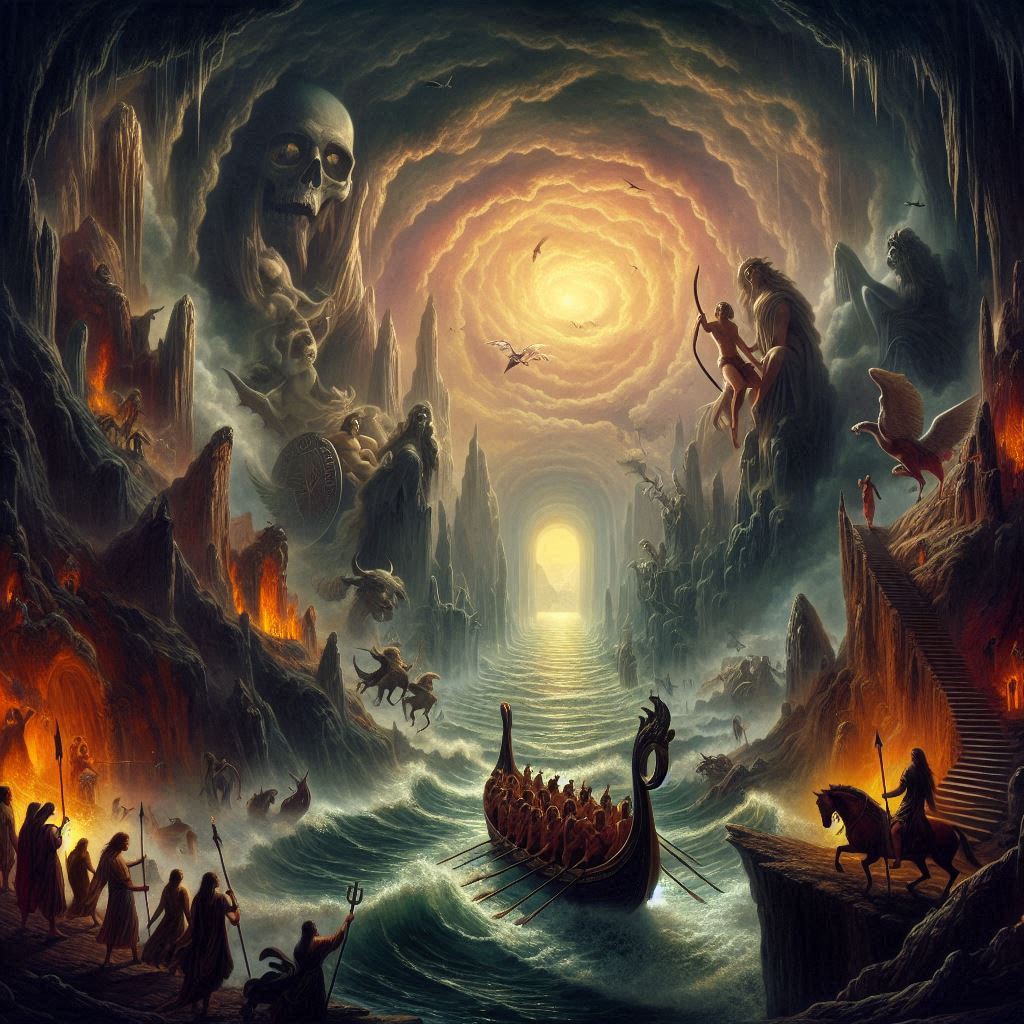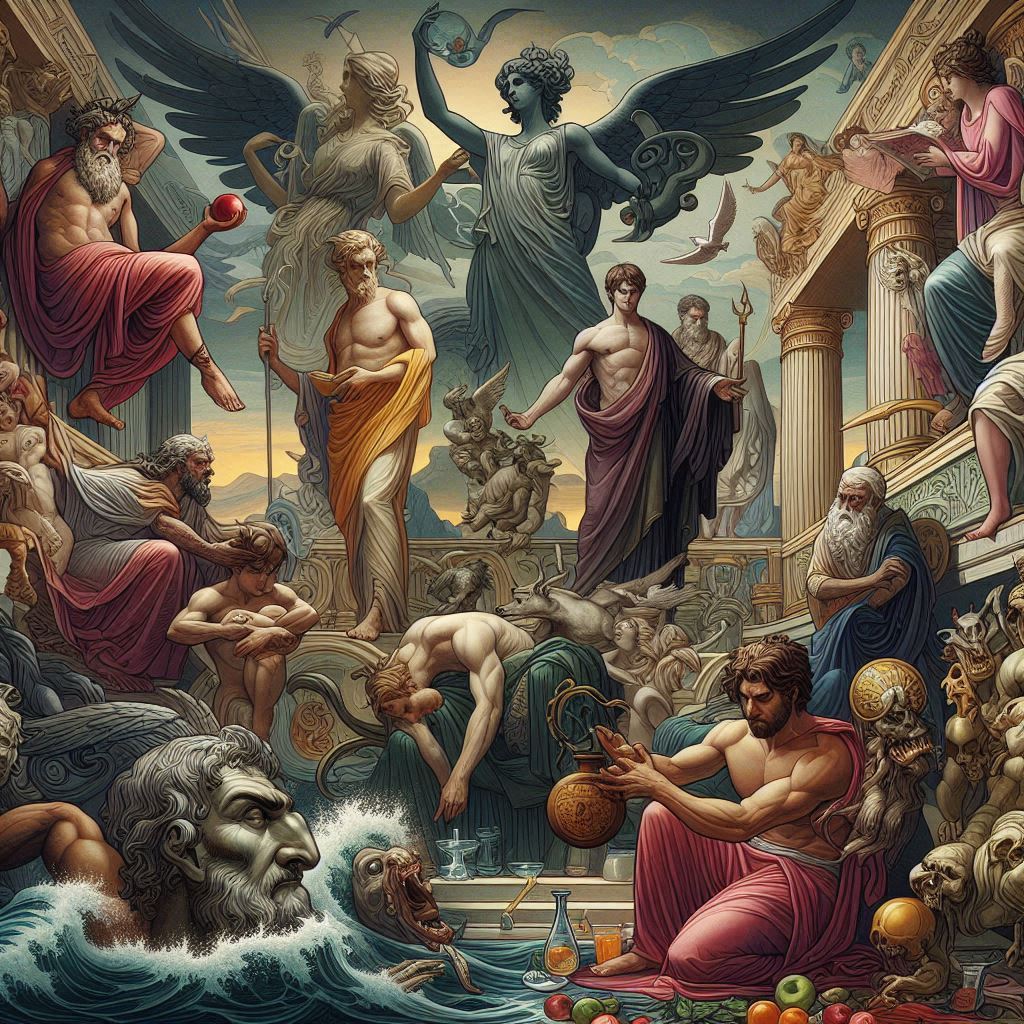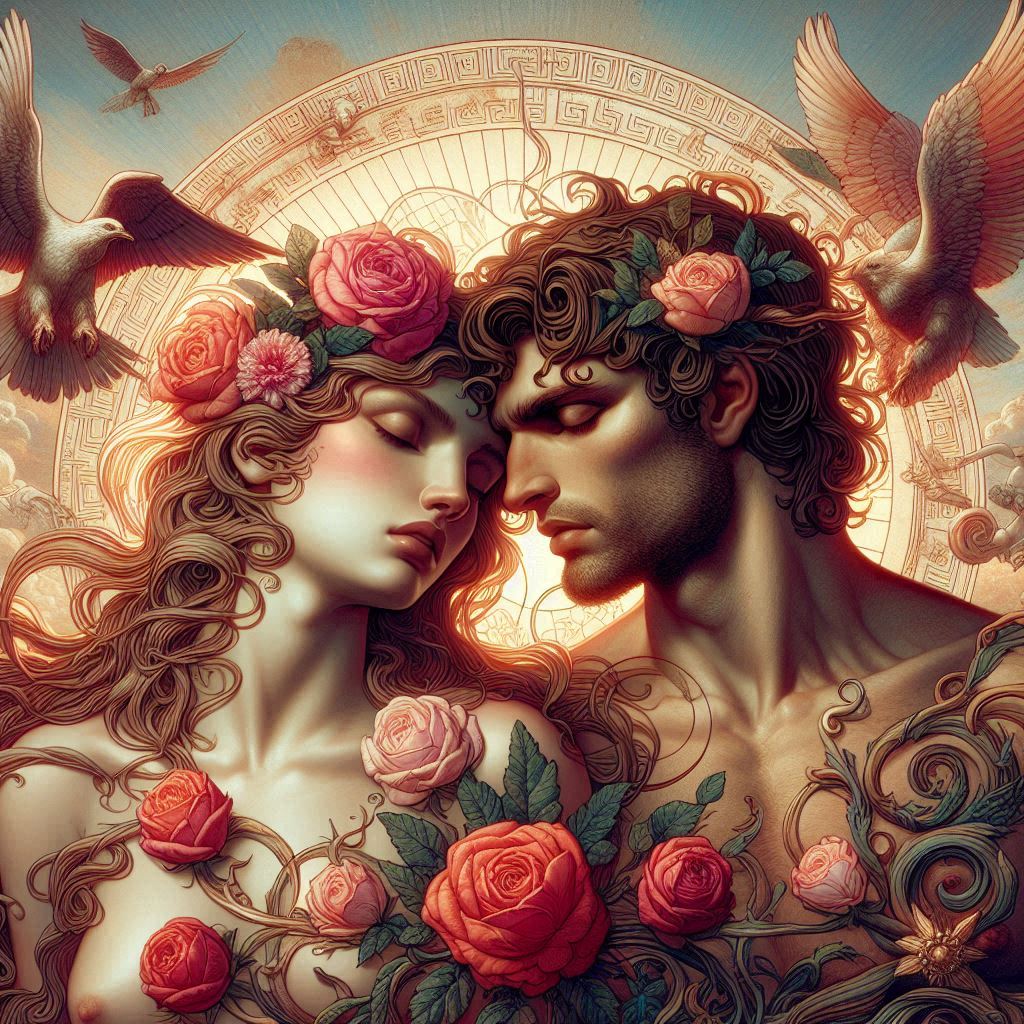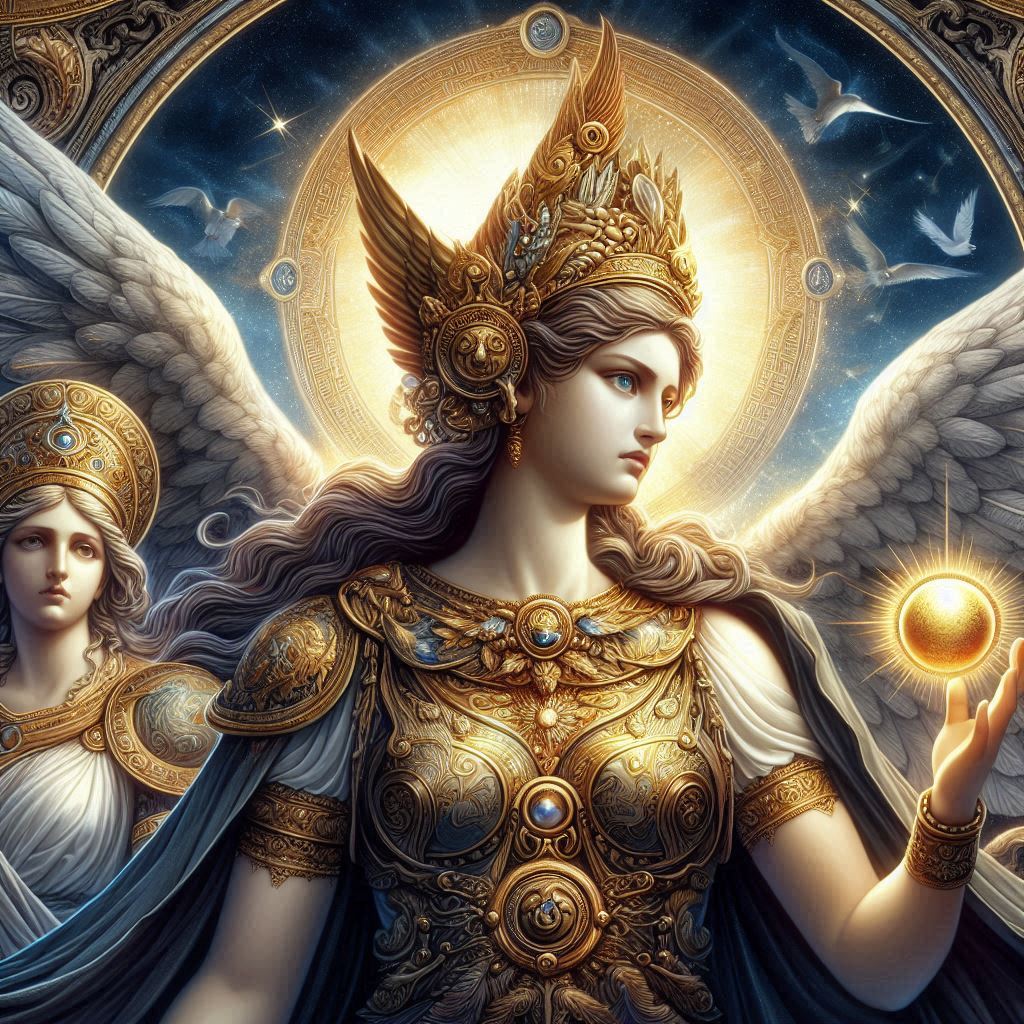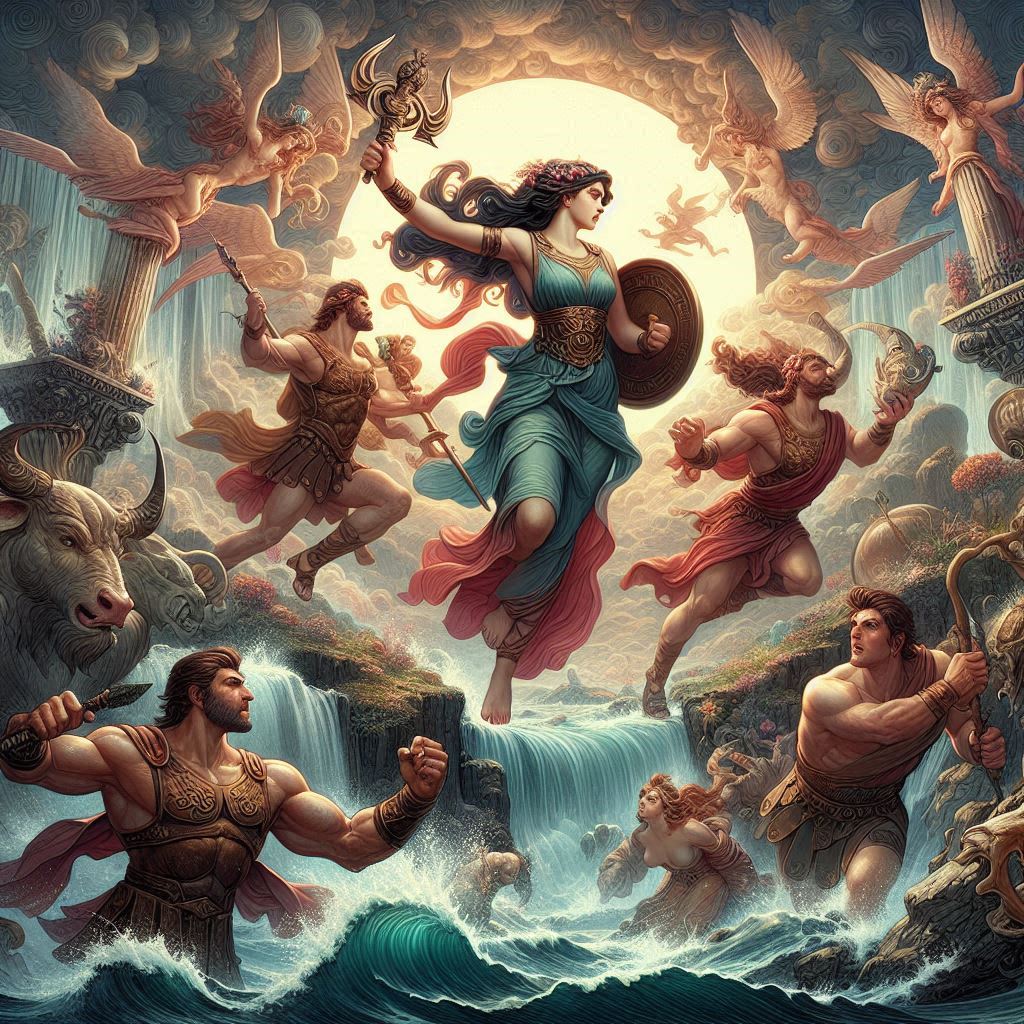Human history spans millions of years, beginning with the evolution of Homo sapiens in Africa around 300,000 years ago. The story unfolds through various epochs, including the Stone Age, Bronze Age, and Iron Age, marked by advancements in tool-making, agriculture, and civilizations. Notable ancient civilizations like Mesopotamia, Ancient Egypt, the Indus Valley, and the Yellow River Valley laid foundational aspects of governance, writing systems, and cultural practices. Over time, empires such as the Roman, Byzantine, Mongol, and Ottoman expanded their influence, shaping geopolitics and trade routes. The Renaissance in Europe brought about a revival in art, science, and literature, leading to the Age of Exploration and colonization. The industrial revolution transformed economies, while the 20th century witnessed significant global conflicts, technological innovations, and shifts in political ideologies. Today, humanity faces challenges and opportunities shaped by its rich historical tapestry.
Prehistory (c. 3.3 million years ago – c. 3000 BCE)
Prehistory, spanning approximately from 3.3 million years ago to around 3000 BCE, offers a profound insight into the evolutionary journey of Homo sapiens and the emergence of early civilizations. This expansive period predates written records, relying on archaeological evidence, paleontological findings, and anthropological studies to piece together the narrative of human evolution and societal development.
The story begins with the emergence of the earliest hominins, such as Australopithecus afarensis, around 3.3 million years ago in Africa. These early ancestors exhibited bipedalism—a defining characteristic that set them apart from their primate relatives. Over time, as environmental changes shaped their habitats, evolutionary processes led to the emergence of various hominin species, including Homo habilis, Homo erectus, and eventually Homo sapiens.
Around 2.5 million years ago, the Stone Age commenced, marked by the use of stone tools by early hominins. The Oldowan tool industry, characterized by simple stone flakes and cores, represented a significant technological advancement. These tools not only facilitated hunting and scavenging but also provided early humans with a means to manipulate their environment, marking the beginning of cultural evolution.
By 1.9 million years ago, Homo erectus emerged as a dominant species. With an increased brain size and sophisticated tool-making capabilities, Homo erectus ventured beyond Africa, migrating to Asia and Europe. Their adaptability, evidenced by the use of fire, more refined Acheulean tools, and communal living structures, enabled them to thrive in diverse environments.
As millennia passed, Homo sapiens, our direct ancestors, began to emerge around 300,000 years ago. The cognitive revolution marked a pivotal shift. Enhanced cognitive abilities, evidenced by symbolic thinking, language development, and complex social structures, distinguished Homo sapiens from earlier hominins. This period witnessed the emergence of anatomically modern humans, equipped with the capacity for abstract thought, artistic expression, and cultural innovation.
Around 70,000 years ago, a significant migration event known as the “Out of Africa” theory occurred. Homo sapiens began to migrate from Africa, spreading across continents. These migrations, driven by environmental factors, population pressures, and the quest for resources, led to the colonization of Asia, Europe, Australia, and eventually the Americas. Each migration wave facilitated the adaptation of Homo sapiens to diverse ecosystems, resulting in the development of distinct regional cultures, languages, and societal structures.
The Upper Paleolithic period, spanning from approximately 40,000 to 10,000 years ago, witnessed remarkable advancements. The development of complex tools, such as the blade technology, facilitated hunting, fishing, and gathering. Moreover, artistic expression flourished, evidenced by intricate cave paintings, sculptures, and symbolic artifacts found across Europe and Asia. These artistic endeavors, such as the renowned cave paintings in Lascaux and Chauvet in France, provide insights into the spiritual, cultural, and social lives of prehistoric humans.
The Neolithic Revolution, commencing around 10,000 BCE, marked a transformative shift from nomadic hunter-gatherer lifestyles to settled agricultural communities. This period, characterized by the domestication of plants and animals, led to the emergence of agriculture, sedentism, and the development of permanent settlements. The Fertile Crescent, encompassing regions of modern-day Iraq, Syria, and Turkey, witnessed the domestication of wheat, barley, and livestock, laying the foundation for the first agricultural societies.
As agricultural communities proliferated, the development of pottery, weaving, and metallurgy revolutionized daily life. Settlements grew into towns, towns into cities, leading to the emergence of complex societies, trade networks, and cultural exchanges. The rise of civilizations, such as Mesopotamia, Ancient Egypt, the Indus Valley, and the Yellow River Valley, marked the culmination of millennia of cultural, technological, and societal evolution.
Ancient history (c. 3000 BCE – c. 500 CE)
Ancient history, spanning from approximately 3000 BCE to around 500 CE, is a period rich in cultural, political, and technological advancements that laid the foundations for the development of classical civilizations and empires. This era witnessed the rise and fall of influential societies, transformative innovations, and enduring legacies that shaped the contours of human civilization.
The dawn of ancient history is marked by the emergence of the first civilizations along the fertile river valleys of Mesopotamia, Egypt, the Indus Valley, and the Yellow River Valley. Mesopotamia, situated between the Tigris and Euphrates rivers, witnessed the rise of Sumerians, Akkadians, Babylonians, and Assyrians. These civilizations pioneered monumental achievements, including the invention of cuneiform writing, the world’s earliest known form of writing, which facilitated record-keeping, administration, and cultural expression.
Simultaneously, ancient Egypt flourished along the fertile banks of the Nile River. The Old Kingdom, characterized by the construction of iconic pyramids, showcased the architectural prowess and religious beliefs of ancient Egyptians. Hieroglyphic writing, intricate burial practices, and polytheistic religious beliefs, centered around deities like Ra, Osiris, and Isis, underscored the cultural and spiritual significance of the Nile Valley civilizations.
In the Indian subcontinent, the Harappan civilization thrived in the fertile plains of the Indus River Valley. Urban centers like Mohenjo-Daro and Harappa showcased sophisticated urban planning, advanced sanitation systems, and intricate trade networks. While the script of the Harappan civilization remains undeciphered, archaeological findings highlight the cultural, economic, and technological advancements of ancient India.
In East Asia, the Yellow River Valley witnessed the emergence of early Chinese dynasties, including the Xia, Shang, and Zhou. These dynasties laid the groundwork for Chinese civilization, marked by the development of Chinese characters, bronze metallurgy, and philosophical traditions like Confucianism and Taoism. The Mandate of Heaven, a concept delineating the divine right to rule, shaped political governance and dynastic transitions in ancient China.
As ancient history progressed, the Mediterranean region became a crucible of cultural interaction and imperial expansion. Ancient Greece, encompassing city-states like Athens, Sparta, and Thebes, laid the foundations for Western philosophy, politics, and arts. The Golden Age of Athens, under the leadership of Pericles, witnessed unparalleled advancements in literature, architecture, and democratic governance. Philosophers like Socrates, Plato, and Aristotle revolutionized intellectual discourse, laying the groundwork for Western thought.
Parallelly, the rise of the Roman Republic and subsequent Roman Empire transformed the political landscape of the Mediterranean world. From the establishment of the Twelve Tables, the foundational legal code, to the expansionist policies of Julius Caesar and Augustus, Rome emerged as a dominant imperial power. The Pax Romana, a period of relative peace and stability, facilitated trade, cultural exchanges, and the dissemination of Roman law, architecture, and engineering across Europe, North Africa, and the Middle East.
In the realms of religion and spirituality, ancient history witnessed the emergence and spread of influential religious traditions. Zoroastrianism, originating in ancient Persia, introduced dualistic concepts of good and evil, influencing subsequent monotheistic religions like Judaism, Christianity, and Islam. In India, the Vedic traditions evolved into Hinduism, a diverse and complex religious tradition encompassing a pantheon of deities, rituals, and philosophical teachings.
By the end of ancient history, the world was poised for transformative changes. The decline of the Roman Empire, marked by internal strife, external invasions, and economic challenges, heralded the onset of the Medieval period. Concurrently, the spread of Buddhism from India to East Asia, the codification of Roman law in the Byzantine Empire, and the consolidation of Gupta India and Han China underscored the enduring legacies of ancient civilizations.
Post-classical history (c. 500 CE – c. 1500 CE)
Post-classical history, spanning from approximately 500 CE to 1500 CE, represents a transformative era characterized by the dissolution of classical empires, the emergence of new civilizations, cultural exchanges, and technological advancements. This period witnessed the ebb and flow of empires, the spread of religions, and the confluence of diverse civilizations, laying the foundations for the modern world.
The decline of the Western Roman Empire marked the onset of the Medieval period in Europe, characterized by decentralized governance, feudalism, and the spread of Christianity. The Byzantine Empire, a continuation of the Eastern Roman Empire, flourished as a bastion of Greek culture, Orthodox Christianity, and imperial legacy. Constantinople, the capital city, served as a nexus of trade, cultural exchange, and religious orthodoxy, preserving classical knowledge and serving as a bulwark against Islamic expansion in Europe.
Parallelly, the rise of Islamic civilizations heralded significant transformations across the Middle East, North Africa, and Spain. The Rashidun, Umayyad, and Abbasid caliphates established expansive empires, fostering intellectual, cultural, and scientific advancements. Baghdad, under the Abbasids, emerged as a center of learning, translating classical Greek, Persian, and Indian texts, thereby preserving and disseminating knowledge across the Islamic world and beyond.
The Islamic Golden Age, spanning from the 8th to the 14th century, witnessed unparalleled progress in arts, sciences, philosophy, and medicine. Scholars like Avicenna, Averroes, and Al-Farabi made significant contributions to mathematics, astronomy, philosophy, and medicine, laying the groundwork for the European Renaissance. Additionally, Islamic art, architecture, and literature flourished, exemplified by the Alhambra in Spain, the poetry of Rumi and Omar Khayyam, and intricate geometric designs adorning mosques and palaces.
In South Asia, the Gupta Empire gave way to regional kingdoms and empires, including the Delhi Sultanate and the Mughal Empire. The Delhi Sultanate, founded by Muslim dynasties, facilitated cultural synthesis, trade, and the spread of Islam across the Indian subcontinent. Meanwhile, the Mughal Empire, established by Babur and consolidated by Akbar, Jahangir, and Shah Jahan, heralded a golden age characterized by political stability, artistic patronage, and religious tolerance.
In East Asia, the Tang and Song dynasties in China facilitated economic prosperity, technological innovations, and cultural renaissance. The Grand Canal, connecting northern and southern China, facilitated trade, agriculture, and urbanization. Moreover, advancements in printing, porcelain production, and navigation techniques, exemplified by the voyages of Admiral Zheng He, expanded Chinese influence across maritime Asia.
Simultaneously, Japan witnessed the emergence of feudalism, characterized by the rise of samurai warriors, shogunates, and the establishment of the Heian period. The Tale of Genji, penned by Lady Murasaki, exemplified the cultural, social, and literary achievements of the Heian court, influencing subsequent Japanese aesthetics, literature, and societal norms.
In the Americas, the Post-classical period witnessed the rise and fall of Mesoamerican civilizations, including the Maya, Aztec, and Inca. The Maya, renowned for their architectural marvels, astronomical knowledge, and hieroglyphic script, dominated the Yucatan Peninsula, while the Aztec Empire, centered in Tenochtitlan, established a tributary system, religious practices, and monumental architecture, including the Templo Mayor.
By the end of the Post-classical period, the world was poised for transformative global interactions. The Mongol Empire, under Genghis Khan and his successors, established the largest contiguous land empire in history, connecting East and West through trade, cultural exchange, and conquest. The Pax Mongolica facilitated the dissemination of technologies, religions, and goods across Eurasia, heralding an era of interconnectedness, albeit marked by periods of conflict, cultural diffusion, and innovation.
Early modern period (c. 1500 CE – c. 1800 CE)
The Early Modern Period, spanning from approximately 1500 CE to 1800 CE, is a transformative era marked by significant shifts in global dynamics, exploration, colonization, religious reformation, scientific revolution, and political upheavals. This period witnessed the emergence of new worldviews, the rise and fall of empires, and the foundations of modernity.
The dawn of the Early Modern Period was characterized by European exploration and maritime expansion, facilitated by advancements in navigation, shipbuilding, and cartography. Explorers like Christopher Columbus, Vasco da Gama, and Ferdinand Magellan ventured into uncharted waters, establishing trade routes, colonies, and global empires. The discovery of the Americas, circumnavigation of Africa, and establishment of trading posts in Asia heralded an era of European hegemony, mercantilism, and colonialism.
Simultaneously, the Protestant Reformation, initiated by Martin Luther in 1517, catalyzed religious schisms, wars, and transformations across Europe. The fragmentation of Christian unity led to the emergence of various Protestant denominations, Catholic Counter-Reformation, and religious conflicts like the Thirty Years’ War. The printing press, pioneered by Johannes Gutenberg in the 15th century, facilitated the dissemination of religious texts, scientific knowledge, and revolutionary ideas, fostering intellectual ferment, religious pluralism, and societal transformations.
In Asia, the Early Modern Period witnessed the consolidation and decline of empires, including the Mughal Empire, Safavid Persia, Ming, and Qing dynasties. The Mughal Empire, under Akbar, Jahangir, and Shah Jahan, flourished as a cultural, economic, and political powerhouse, fostering artistic patronage, religious syncretism, and architectural marvels like the Taj Mahal. Meanwhile, in China, the Ming and Qing dynasties facilitated economic prosperity, cultural renaissance, and territorial expansion, exemplified by the Forbidden City, maritime explorations, and the consolidation of Confucian governance.
In the Islamic world, the Ottoman Empire emerged as a dominant force, expanding across Asia, Europe, and Africa. Constantinople, renamed Istanbul, served as the capital of a multicultural, multi-religious empire, fostering scientific, artistic, and intellectual advancements. The Ottoman Empire’s military campaigns, administrative reforms, and religious tolerance shaped the geopolitical landscape, facilitating trade, cultural exchanges, and the dissemination of Islamic civilization across Eurasia.
The Early Modern Period also witnessed the Scientific Revolution, characterized by advancements in astronomy, physics, mathematics, and biology. Visionaries like Copernicus, Galileo, Kepler, and Newton revolutionized understanding of the cosmos, celestial mechanics, and natural laws. The Scientific Method, empirical observation, and rational inquiry supplanted traditional scholasticism, alchemy, and religious dogma, fostering innovations, technological advancements, and Enlightenment ideals.
In the Americas, European colonization, facilitated by conquest, disease, and exploitation, led to the establishment of colonial empires, plantations, and forced labor systems. The Columbian Exchange, a transatlantic exchange of goods, crops, diseases, and cultures, transformed ecosystems, economies, and societies on both sides of the Atlantic. Indigenous populations faced displacement, enslavement, and cultural assimilation, while European powers vied for territorial control, resources, and global dominance.
By the 18th century, the Early Modern Period witnessed the Enlightenment, an intellectual and cultural movement advocating reason, individualism, and skepticism. Thinkers like Voltaire, Rousseau, Montesquieu, and Locke challenged traditional authorities, advocated for human rights, and laid the foundations for democratic governance, constitutionalism, and modern ideologies. The American and French Revolutions, fueled by Enlightenment ideals, political grievances, and social inequalities, heralded transformative political upheavals, constitutional reforms, and the rise of nation-states.
Late modern period (c. 1800 CE – present)
The Late Modern Period, spanning from approximately 1800 CE to the present, is a transformative era characterized by rapid industrialization, globalization, technological advancements, ideological conflicts, and societal transformations. This period witnessed the emergence of modern nation-states, economic systems, cultural movements, and geopolitical shifts that continue to shape the contemporary world.
The dawn of the 19th century marked the onset of the Industrial Revolution, a paradigmatic shift from agrarian economies to industrialized societies fueled by innovations in machinery, manufacturing processes, and energy sources. The steam engine, mechanized textile production, and urbanization catalyzed unprecedented economic growth, urban migration, and societal transformations. Industrialized nations, including Britain, Germany, and the United States, emerged as global powers, fostering technological innovations, infrastructure development, and capitalist economies predicated on mass production, urbanization, and consumerism.
Simultaneously, the Late Modern Period witnessed significant geopolitical transformations, imperial expansions, and decolonization movements. European powers, including Britain, France, and Belgium, established vast colonial empires in Africa, Asia, and the Americas, exploiting resources, labor, and markets. However, the 20th century witnessed the unraveling of colonial regimes, fueled by nationalist movements, anti-imperial struggles, and global decolonization efforts that reshaped geopolitical landscapes, national identities, and global power dynamics.
The 19th century also witnessed ideological transformations, cultural movements, and political revolutions that challenged traditional authorities, social hierarchies, and religious norms. The rise of nationalism, liberalism, socialism, and communism catalyzed political upheavals, constitutional reforms, and revolutionary movements across Europe, Asia, and the Americas. The Revolutions of 1848, the Paris Commune, and the Russian Revolution exemplified the tumultuous quest for political rights, social justice, and economic equality that characterized the Late Modern Period.
By the 20th century, the world witnessed two devastating World Wars, geopolitical rivalries, and ideological conflicts that reshaped global alliances, military strategies, and international institutions. World War I and World War II, characterized by mass mobilization, total warfare, and ideological confrontations, resulted in unprecedented human suffering, geopolitical realignments, and societal upheavals. The establishment of the League of Nations, United Nations, and Cold War rivalries between the United States and the Soviet Union exemplified the complex interplay of global politics, ideological conflicts, and international diplomacy that defined the 20th century.
The Late Modern Period also witnessed significant advancements in science, technology, and medicine that revolutionized daily life, communication, and societal norms. The Information Age, characterized by innovations in computing, telecommunications, and digital technologies, fostered global connectivity, information dissemination, and cultural exchanges that transcended geographical boundaries, cultural barriers, and temporal constraints. The development of the internet, smartphones, and social media platforms facilitated unprecedented access to information, collaboration, and interaction, transforming economies, societies, and individual experiences in the contemporary era.
In the realm of culture, the Late Modern Period witnessed diverse movements, artistic expressions, and intellectual discourses that challenged conventions, explored new perspectives, and fostered creative innovations. Modernism, postmodernism, and contemporary art movements exemplified the evolving aesthetics, cultural values, and societal critiques that characterized the late 19th and 20th centuries. Literary figures like James Joyce, Virginia Woolf, Gabriel García Márquez, and Chinua Achebe explored themes of identity, memory, colonialism, and globalization, reflecting the complexities, contradictions, and challenges of the modern world.
By the turn of the 21st century, the Late Modern Period continued to witness significant transformations, global challenges, and unprecedented opportunities that shaped the contemporary era. Climate change, environmental degradation, and sustainability emerged as critical issues requiring international cooperation, technological innovations, and societal transformations. Meanwhile, globalization, economic interdependence, and technological convergence facilitated unprecedented opportunities for collaboration, innovation, and progress across diverse sectors, regions, and communities.
